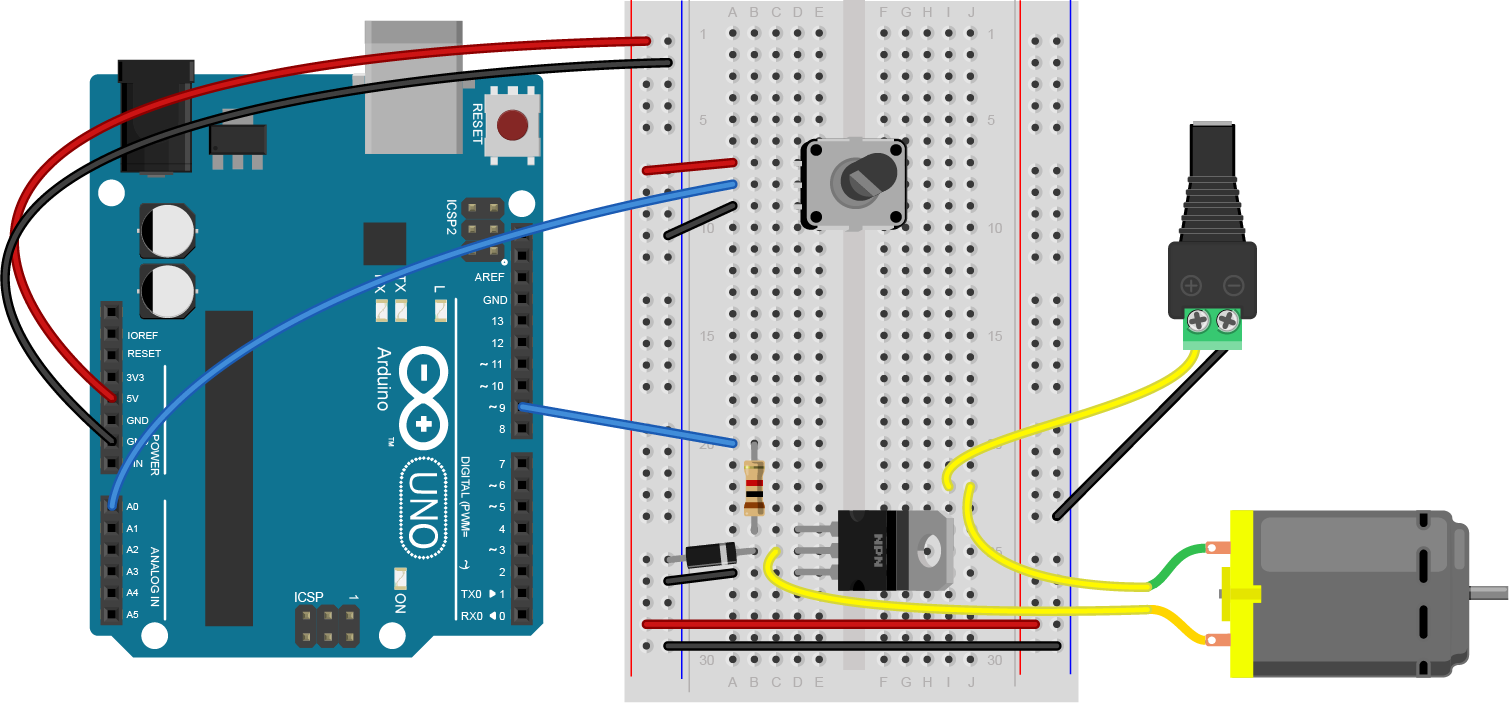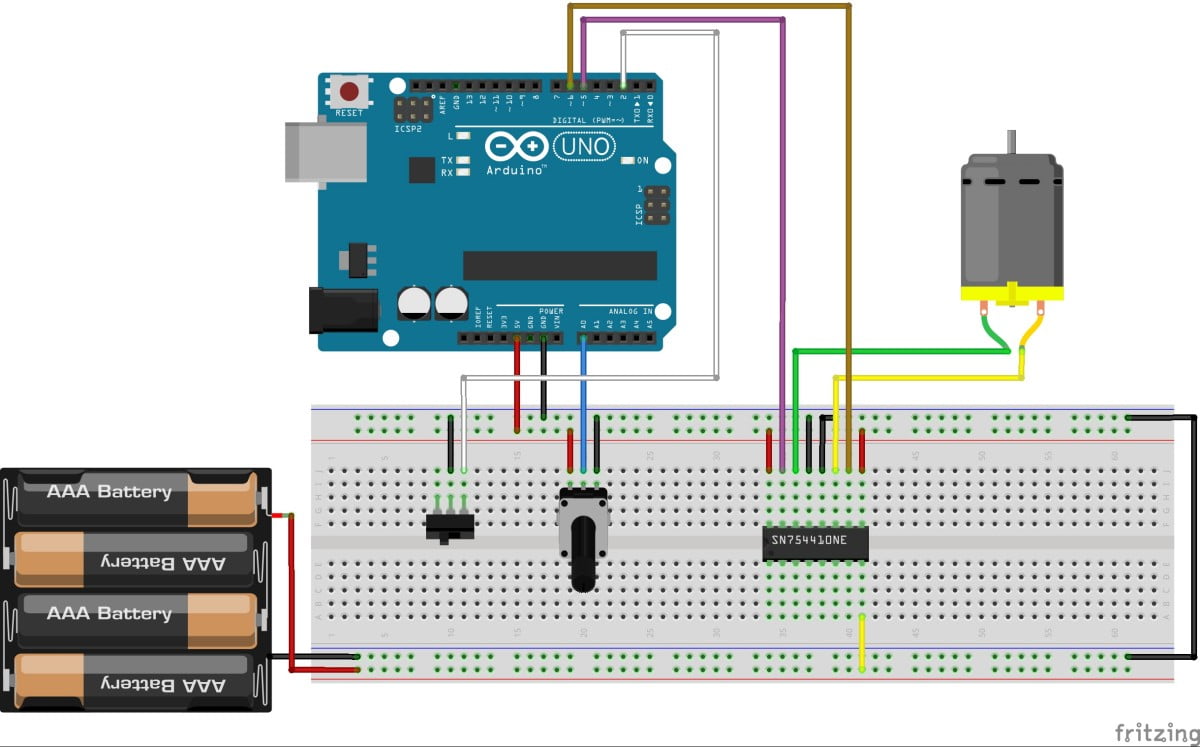

- ARDUINO PROJECT FORWARD AND REVERSE MOTOR USING HOW TO
- ARDUINO PROJECT FORWARD AND REVERSE MOTOR USING CODE
- ARDUINO PROJECT FORWARD AND REVERSE MOTOR USING DOWNLOAD
The first two lines of code assign the in1 variable to Arudino pin 10, and the in2 variable to pin 11. Once you’ve built the circuit above, upload this code to your Arduino: int in1 = 10 Here, we’re using a 12V supply to power the motor, and a separate 5V supply to power the Arduino and L293D. You will probably need a separate power supply for the motor. To build this project, connect the DC motor, L293D, and Arduino like this: You’ll learn basic to advanced Arduino programming and circuit building techniques that will prepare you to build any project. If you want to learn more about the Arduino, check out our Ultimate Guide to the Arduino video course. Let’s build an example project that will make a DC motor spin in one direction for two seconds, stop, then spin in the opposite direction for two seconds. To build the example projects, you’ll need the following parts:Ĭonnect the DC Motor and L293D to the Arduino
ARDUINO PROJECT FORWARD AND REVERSE MOTOR USING HOW TO
In this tutorial, we’re going to build a few example projects to demonstrate how to use the L293D to control DC motors on the Arduino. To turn the motor OFF, send a LOW signal to the input 2 pin. To make the motor spin in the opposite direction, send a LOW signal to the input 1 pin, and a HIGH signal to the input 2 pin. This will cause the motor to spin in one direction. To turn the H-bridge 1 motor ON, send a HIGH signal to the input 1 pin, and LOW signal to the input 2 pin. Input 4: motor control signal for H-bridge 2.Input 3: motor control signal for H-bridge 2.Input 2: motor control signal for H-bridge 1.


ARDUINO PROJECT FORWARD AND REVERSE MOTOR USING DOWNLOAD
You can download the files associated with this episode here:ĭistributed under the GNU General Public (Open-Source) License. The Arduino Contest has been extended! So don’t forget to submit your project. If you want to learn more about analog input filtering in software, check out this example code. If you want to wire that up, take a look through this Wikipedia article, and read through this tutorial. I mention in the video that you can control DC motor direction using an H-Bridge. We’ll control the servo using a PWM signal from the arduino, and I’ll show you how you can turn analog distance readings into precise angles for the servo to turn to! Next, it’s onto 180 degree servo motors, which we will power on an independent 5V rail using a voltage regulator. This week, we’ll finally be using the Arduino to control some motors! First up, we’ll control a standard DC motor running off a 9V battery with the help of an NPN transistor and a PWM (Pulse Width Modulated) signal from the Arduino.

This tutorial was featured on the official Arduino blog on


 0 kommentar(er)
0 kommentar(er)
